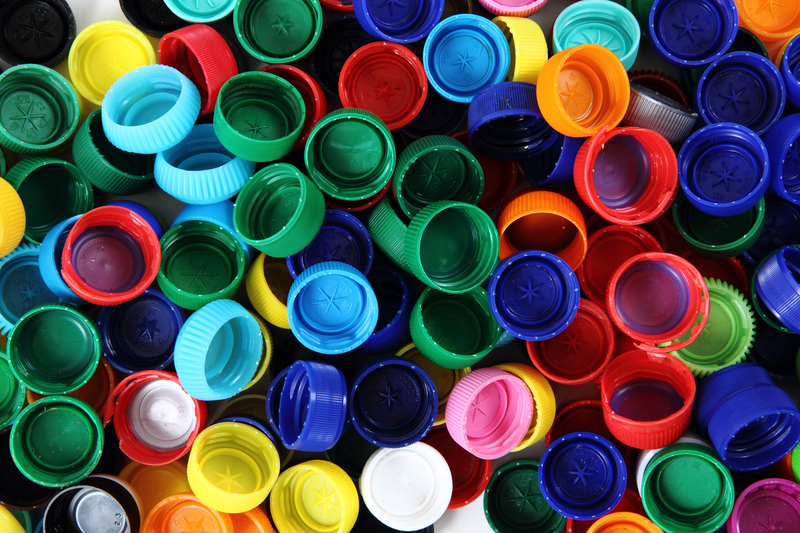Recycling Pots and Pans for a Greener Kitchen
Does your kitchen harbor a collection of battered pots, mismatched pans, and other cookware that's seen better days? If so, you're certainly not alone. As we try to create more sustainable homes, knowing how to recycle cookware effectively is crucial for reducing waste and making eco-friendly choices. In this comprehensive guide, we dive deep into the best practices for recycling pots and pans and offer tips for transforming your kitchen into a greener space.
Why Should You Recycle Pots and Pans?
Cookware is often made of valuable, recyclable materials. Simply tossing old pots and pans into the trash means these resources go to waste and contribute to overburdened landfills. Recycling cookware not only conserves raw materials but also cuts down on pollution and energy use associated with making new products.
Environmental Impact of Discarded Cookware
- Landfill Overflow: Approximately 2.5 million tons of metal waste are disposed of annually in the US alone, a significant portion stemming from kitchens.
- Non-Biodegradable: Most cookware contains metals or coatings that do not break down naturally and can leach harmful substances into the soil.
- Missed Recycling Opportunities: Aluminum, stainless steel, and copper - all common in cookware - are endlessly recyclable materials.

Understanding Pot and Pan Materials
Before deciding how to recycle your old pots and pans, it's important to know what they're made of. Here are the most common materials and whether they're recyclable:
- Stainless Steel: Highly recyclable and accepted at most metal recycling facilities.
- Aluminum: Easy to recycle and widely processed by local centers.
- Copper: Valued for scrap and commonly repurposed.
- Cast Iron: Can be refurbished or recycled, but check for local policies as it's heavier.
- Nonstick (Teflon) Coated: Trickier to recycle due to the nonstick layer; find specialized facilities or upcycle instead.
- Enamel-Coated: May be accepted, but the coating often needs removal.
Tip: Always check with your municipality for current recycling rules and options in your region.
How to Recycle Old Pots and Pans
Ready to dispose of your used cookware? Here's a step-by-step guide to ensure your kitchenware gets a second life:
1. Assess Condition and Reusability
- If your pots and pans are in decent shape, consider donating them to shelters, thrift stores, or organizations in need.
- Contact local community centers, schools, or food banks that might accept gently worn kitchenware.
2. Locate Metal Recycling Facilities
- Correspond with your town's recycling or waste management department to find out if they process cookware.
- Scrap metal yards often accept pots and pans made of pure metals. Some may pay for certain materials like copper or stainless steel!
- For nonstick or coated pans, ask about any special requirements.
3. Prepare Cookware for Recycling
- Remove any non-metal parts (plastic handles, glass lids, rubber knobs) when possible.
- Clean your old pots and pans to remove residual food, grease, or non-recyclable parts.
- Pair different metals separately if required by the recycling facility.
4. Specialized Recycling for Nonstick Cookware
- Nonstick coatings such as Teflon are not accepted at many recycling centers. Search for take-back programs by cookware brands or specialized recycling firms.
- Some manufacturers, like TerraCycle, run mail-in or in-store recycling programs specifically for coated pans.
Creative Alternatives to Recycling: Upcycling Pots and Pans
Not all kitchenware recycling happens at a facility. With a little imagination, your old cookware can enjoy a second life right in your home or garden!
Upcycling Ideas for Old Pots and Pans
- Planters: Drill a small hole for drainage and use as eye-catching plant pots.
- Garden Containers: Old pans make quirky seedling trays or herb gardens.
- Wall Art: Arrange interesting or vintage pans as a decorative kitchen display.
- Storage Solutions: Use a saucepan to hold utensils or organize small tools in your garage.
- Bird Baths or Feeders: Attach a pan to a stand or tree for outdoor wildlife fun.
Upcycling pans and pots offers a fun, resourceful way to reduce waste while adding personality to your home or yard.
The Role of Manufacturers in Greener Kitchens
Brands and manufacturers are increasingly embracing sustainability. Many have begun to accept old cookware for recycling or offer trade-in programs. Supporting such initiatives helps close the loop for greener kitchens.
Examples of Brand Initiatives:
- Le Creuset: Some stores have collection programs for old cast iron pots and pans.
- Calphalon: Partnered with Terracycle to recycle nonstick cookware via mail-in programs.
- GreenPan: Offers advice for returning used pans and supports environmentally friendly manufacturing processes.
How to Choose Eco-Friendly Cookware
A sustainable kitchen isn't only about what you recycle - it's also about what you purchase next. When replacing old pots and pans, consider:
1. Recycled Content and Recyclability
- Purchase cookware made from recycled or sustainable materials, such as recycled aluminum or stainless steel.
- Check that your new pots and pans are fully recyclable at the end of their life cycle.
2. Durability and Longevity
- Invest in quality: Sturdy pots and pans last for decades, minimizing waste and frequent replacement.
- Opt for classic and simple designs that are less likely to go out of style.
3. Non-Toxic Coatings
- Seek out nonstick cookware free from PFOA, PFAS, and toxic chemicals.
- Brands offering ceramic coatings or seasoning (like cast iron) are often safer and easier to recycle.
Common Questions About Recycling Pots and Pans
Can You Put Pots and Pans in the Curbside Recycling Bin?
No, not usually. Most curbside recycling programs do not accept cookware because of their large size, mixed materials, or coatings. Always take them to specialized scrap metal recyclers.
What Should I Do with Burnt or Damaged Cookware?
Completely unusable pots and pans, including those that are warped or heavily burnt, can usually be dropped off at scrap metal yards. Remove all rubber, plastic, and glass parts beforehand for easier processing.
Are Non-Stick Pans Bad for the Environment?
Nonstick pans can pose environmental challenges due to their chemical coatings, which inhibit recycling and may release toxins when incinerated. Whenever possible, choose durable alternatives or use dedicated recycling programs.
Building Greener Kitchen Habits
Recycling is just one step toward a more sustainable kitchen. Here are a few more eco-friendly tips for conscious cooks:
- Reduce what you buy: Only add cookware to your kitchen when truly necessary, and avoid duplicates.
- Learn to repair: Simple fixes like tightening handles, removing rust from cast iron, and re-seasoning pans can extend their life.
- Donate or share: Give old but usable pots and pans to friends, family, or organizations to keep them out of landfills.
- Compost kitchen waste: Along with recycling, composting food scraps reduces your household's overall impact.

Summary: Greening Your Kitchen Through Smart Recycling
Recycling pots and pans is an essential, actionable way to foster a greener kitchen and a healthier planet. Whether you locate a nearby metal recycling facility, donate gently used cookware, or spark creativity with upcycling projects, every action helps reduce waste and conserve natural resources.
Remember: a greener kitchen is about making thoughtful decisions. From recycling cookware to choosing eco-friendly replacements, every small step adds up to a positive, lasting impact.
Start Your Cookware Recycling Journey Today!
Don't let your old pots and pans gather dust or end up in the landfill. Research local recycling options, embrace creative upcycling, and share your sustainable kitchen efforts with others. Together, we can all contribute to a cleaner, greener future--one recycled pot at a time!
We hope you found this guide on recycling pots and pans for a greener kitchen practical and inspiring. For more sustainable living tips, be sure to visit our blog!